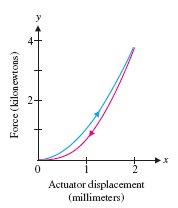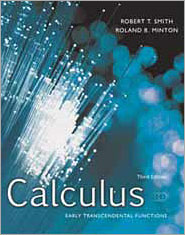 <a onClick="window.open('/olcweb/cgi/pluginpop.cgi?it=jpg::::/sites/dl/free/0073451342/295036/ch05.jpg','popWin', 'width=NaN,height=NaN,resizable,scrollbars');" href="#"><img valign="absmiddle" height="16" width="16" border="0" src="/olcweb/styles/shared/linkicons/image.gif"> (23.0K)</a> <a onClick="window.open('/olcweb/cgi/pluginpop.cgi?it=jpg::::/sites/dl/free/0073451342/295036/ch05.jpg','popWin', 'width=NaN,height=NaN,resizable,scrollbars');" href="#"><img valign="absmiddle" height="16" width="16" border="0" src="/olcweb/styles/shared/linkicons/image.gif"> (23.0K)</a> |
Athletes who can jump high are said to have "good hops" or "springs in their legs." These phrases bring to mind images of kangaroos or shoes with springs on the bottom, but there is actually a physiological basis for the terms. Tendons and the arches in your feet act very much like springs that store and release energy. For example, your Achilles tendon stretches as you stride when walking and contracts as your foot hits the ground. Much like a spring that is stretched and then released, the tendon stores energy during the stretching phase and releases it when contracting.
Physiologists measure the efficiency of the springlike action of tendons by computing the percentage of energy released during contraction relative to the energy stored during the stretch. The stress-strain curve presented here shows force as a function of stretch during stretch (top curve) and recoil (bottom curve) for a human arch. (Figure reprinted with permission from Exploring Biomechanics by R. McNeill Alexander.) If no energy is lost, the two curves are identical. The area between the curves is a measure of the energy lost.  <a onClick="window.open('/olcweb/cgi/pluginpop.cgi?it=jpg::::/sites/dl/free/0073451342/295036/ch05_chart.jpg','popWin', 'width=NaN,height=NaN,resizable,scrollbars');" href="#"><img valign="absmiddle" height="16" width="16" border="0" src="/olcweb/styles/shared/linkicons/image.gif"> (6.0K)</a> <a onClick="window.open('/olcweb/cgi/pluginpop.cgi?it=jpg::::/sites/dl/free/0073451342/295036/ch05_chart.jpg','popWin', 'width=NaN,height=NaN,resizable,scrollbars');" href="#"><img valign="absmiddle" height="16" width="16" border="0" src="/olcweb/styles/shared/linkicons/image.gif"> (6.0K)</a>The corresponding curve for a kangaroo (see Alexander) shows almost no area between the curves. This is part of the secret of the kangaroo's phenomenal hopping ability. The efficiency of the kangaroo's legs means that very little energy is required to hop. In fact, biologist Terry Dawson found in treadmill tests that the faster kangaroos run, the less energy they burn (up to the test limit of 20 mph). The same principle applies to human athletes, in that the more the Achilles tendons stretch, the more efficient the running process becomes. For this reason, athletes spend considerable time stretching and strengthening their Achilles tendons.
This chapter demonstrates the versatility of the integral by exploring numerous applications. We start with calculations of the area between two curves. As just discussed, this gives us important information about animal physiology. The integral can be viewed from a variety of perspectives: graphical (areas), numerical (Riemann sum approximations) and symbolic (the Fundamental Theorem of Calculus). As you study each new application, pay particular attention to the role that each of these plays in connecting the new problem to integration. By doing so, you will see that the common thread running through so many diverse applications is the integral.
|





